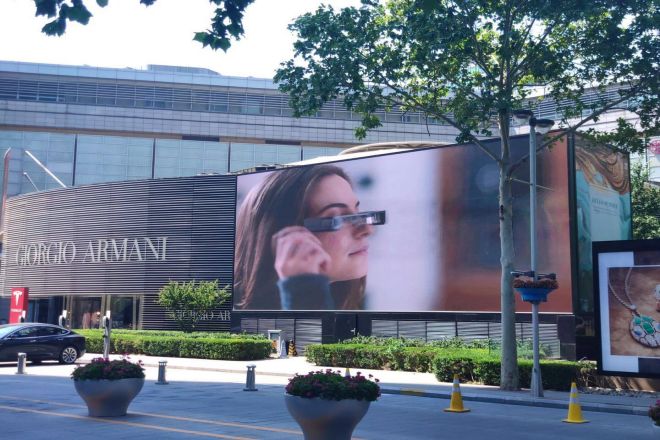Introduction

In today’s society, LED display screens have become an important tool for information dissemination and are widely used on various occasions. However, for many people who are new to LED displays, how to calculate their cost may be a confusing question. Next, I will spend 3 minutes explaining in detail how to calculate the cost of purchasing an LED display.
1. Clarify all the detailed information about the LED display
First of all, you need to clarify the specific specifications of the LED display you need. This includes the length, width, and height dimensions of the display, as well as the resolution you require. Displays with different sizes and resolutions will have different prices.
At the same time, you also need to consider the type of LED display you need, such as indoor, outdoor, standard, high-definition, etc. Different types of displays will also have different prices.
2. Several major factors affecting the cost of LED display screens
- Choice of display type:
Different types of LED displays, such as indoor, outdoor, standard, or high-definition, have specific designs, materials, and functional requirements. For example, outdoor displays need to be waterproof and dustproof, while high-definition displays require higher resolution to ensure image clarity.
Different types of displays involve different materials, processes, and features so prices will vary. For example, waterproofing and dustproofing can increase manufacturing costs, resulting in a higher selling price.
- Display size, dot pitch, and resolution:
The size, dot pitch, and resolution determine the display effect and usage scenarios of the display. The combination of large size, small spacing, and high resolution can provide better visual effects, but it also means more materials and higher technical requirements.
The larger the size, the more materials such as LED lamp beads, driver ICs, and PCB boards are required, and the higher the cost. Likewise, high resolution requires more pixels, which also increases costs. For example, a 100 square meter display will cost more than a 10 square meter display, mainly due to increased material and manufacturing costs.

- Materials and workmanship:
Materials and artistry determine the quality, lifespan, and performance of the display. High-quality materials and advanced craftsmanship ensure the display maintains stable performance and long life during use.
The use of high-quality LED lamp beads, driver ICs, PCB boards, and other materials, as well as the adoption of advanced packaging and welding processes, will be directly reflected in the selling price of the product. These high-quality materials and workmanship often mean higher costs.
In addition, there are also some accessories, such as the brand of power supply, cabinet material, etc., that will all affect it.
- Do you need additional features:
Many LED displays will provide additional features, such as smart control, wireless connectivity, and waterproof and dustproof features. Understanding these features and choosing based on actual needs is the key to ensuring cost-effectiveness.
These additional features often require additional R&D and manufacturing costs. For example, smart control features may require additional hardware and software support, which increases costs.
- Installation methods and maintenance:
In addition to the display itself, installation and maintenance are also important factors to consider. Proper installation ensures the performance and longevity of your display, while good maintenance reduces breakdowns and maintenance costs.
Professional installation and regular maintenance may require additional costs. In addition, some complex installation scenarios may require additional accessories and structural parts, such as steel frames, bases, etc., which will also affect the cost. Knowing these details can help you determine the total cost of the entire project.
- Packaging and shipping methods:
In the cost price of LED light displays, freight accounts for a very large proportion. If you belong to a relatively distant place, then it will account for a quarter. There are two methods of transportation: sea transportation and air transportation. The length of time and freight charges need to be determined according to the country where you are located.
If it is shipped by sea, it is usually packed in wooden boxes, and if it is shipped by air, it is usually packed in air boxes, but there are exceptions. For example, LED rental screens are packed in air boxes regardless of the mode of transportation.
So, by gaining a deeper understanding of how various factors affect price, you can make more informed purchasing decisions, ensuring you get the best LED display for your needs while avoiding unnecessary cost overruns.

3. Calculation of LED display cost
LED display cost calculation formula:
Screen size price + receiving card price + control card price + shipping fee + packaging fee
For example, You need to purchase a fixed outdoor P3.91 LED display, the size is 3*5, and it needs to be shipped by sea.
Then it is: screen price* (3*5) + receiving card price + control card price + sea freight + wooden box packaging fee
In addition, the supplier of the LED display screen is not included in the installation of this part, but if you need it, we can recommend a local installation company to you.
For subsequent maintenance, you need to first confirm the warranty period of the LED display supplier you purchased. If it exceeds the period, you will need to pay the maintenance fee yourself.
Conclusion
The above are all aspects related to the cost and price of LED display screens. If you want to get more detailed prices, please get in touch with us!
